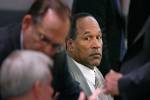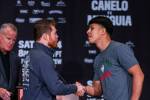Sports-related concussions tied to brain disease
New evidence is rapidly unfolding linking repetitive blows to the head obtained in some contact sports to a fatal condition identified as chronic traumatic encephalopathy, commonly referred to as CTE. These contact sports include football, boxing and hockey, and others including skateboarding, baseball and soccer.
Physicians now know this brain disease is the trigger tied to health issues later in life that manifest themselves into memory loss, balance and movement issues, poor impulse control, constant headaches, depression and dementia. Some victims of this quality-of-life-robbing disease have become so depressed that they’ve taken their own lives. Former professional football linebacker Junior Seau most recently brought CTE to the forefront when he committed suicide last year by shooting himself in the chest.
Unfortunately, CTE can’t positively be identified until an autopsy is performed. The National Institutes of Health recently reported that an examination of Seau’s brain showed he had CTE.
The American Academy of Physical Medicine and Rehabilitation estimates that from 1.6 to 3.8 million sports and recreational-related concussions occur in the United States each year, acknowledging that a true figure is unknown because many concussions are not diagnosed properly or reported. However, the medical community around the world has committed itself to finding an answer to the perplexing question as to why some people who sustain blows to the head, whether they are repetitive or isolated, develop CTE and others don’t. And most importantly what — if anything — can be done to protect athletes who compete in contact sports?
Dr. Charles Bernick at the Cleveland Clinic’s Lou Ruvo Center for Brain Health in Las Vegas heads the Professional Fighters Brain Health Study to examine cumulative effects of repetitive concussive and subconcussive injuries to the brain of professional boxers and mixed martial arts fighters. The study began in April 2011 and, as stated by Bernick’s written objective, is designed to detect the earliest and most subtle signs of brain injury using available MRI imaging techniques and other clinical measures. It also wants to identify factors that make a person more likely to develop chronic neurological disorders and identify individuals who are developing long-term neurological disease.
Bernick’s study centers on three groups:
n Active professional fighters (boxers or mixed-martial-arts combatants),
n Retired professional fighters (with a minimum of 10 professional fights),
n An age- and education-matched control group.
Participants are being followed for four years and are undergoing brain MRI scans, computerized testing of cognitive function and speech sample analysis, and they are having blood samples taken for genetic and protein testing. Participants also are being questioned regarding moods and impulsivity and their prior sports and medical history.
Bernick said 340 fighters have been enrolled in his study to date, but he expects to see that figure grow to 625 participants within four years.
“In a presentation at the annual American Academy of Neurology meeting, we reported that there is a relationship between the number of fights and decline in the volume of certain cortical and subcortical structure, which have been shown in pathological studies to be involved in chronic traumatic encephalopathy,” Bernick recently wrote. “In addition, we have found that number of professional fights and knockouts are correlated with loss of fibers that course across the brain, as well as the connectivity between different areas of the brain as seen on MRI braining imaging.”
Albert Yasbick, 62, is a former professional fighter taking part in Bernick’s study. He used to box out of the Joe Frazier Gym in Philadelphia. At one time he was the third-ranked light heavyweight in the country in amateur boxing, and he takes pride in the fact that he almost defeated Leon Spinks when Spinks was the national champion.
But today Yasbick admits his many years of boxing and taking hits to the head have taken their toll on his health. He now exhibits Parkinson-like symptoms, frequently has bouts of memory loss and has trouble keeping his balance.
“I used to take head shots just to wear a guy out,” Yasbick said of his boxing style. “At the time it was no big deal, but 30 years later you wish you didn’t do it. The older guys told me to try and not take any head shots because it would affect you later in life, but I didn’t listen.”
Yasbick said he only was knocked out once and got into boxing to earn extra money while attending Temple University in Philadelphia. He used to make a $100 per workout as a sparring partner.
Flashing a wide grin, Yasbick is proud of the fact he earned five degrees — an associate degree in electrical engineering, an associate degree in human resources, a bachelor’s degree in marketing, a Master of Business Administration and a master’s degree in energy management. But after getting laid off recently as a planning technician at a local utility company, Yasbick is employed as a dishwasher at a Las Vegas casino.
“I fall to the ground because I have balance problems,” the former fighter said. “No one wants to hire you with these problems.”
Brandishing a tattered scrapbook with yellowed newspaper clips of his former life as a boxer, Yasbick said he doesn’t regret getting into boxing. However, if it was up to him, he said he would insist that all fighters, including the pros, should wear headgear.
“They should also increase the size of the gloves to 10 ounces,” Yasbick said in reference to the lighter 8-ounce gloves currently being used that have less padding. “I would even make them wear 12- or 16-ounce gloves so you don’t cause so much damage.”
Ultimately, Yasbick said he would like to see more cameras stationed around a boxing ring to carefully monitor both fighters’ conditions. This way, he said, computers would be able to judge the fight more fairly and know when it’s in the best interests of the fighters to stop a match.
“CTE is the underlying goal of this study,” Bernick said. “The information we have is only for the first year, but there seems to be a threshold where one sees damage in the brain. In professional fighters, it’s after five years of fights.”
Bernick admits there is little known as to what causes CTE. What is known is that not everyone who sustains blows to the head develops the disease. It could be genetic or related to drug use. But physicians aren’t ready to make such bold statements.
But are concussions the link to CTE? The American Academy of Physical Medicine and Rehabilitation has reported that no more than 15 percent of individuals with a history of mild concussion still experience symptoms one year after the injury. And it is unclear whether CTE will occur after repetitive brain trauma caused by concussions or if a single traumatic blow to the head will spark the disease.
Part of the problem is that there are no standards with regard to return-to-play issues, Bernick points out. He feels whatever standards are eventually developed by professional and amateur sports organizations, they must be multidimensional.
One organization that appears to be ahead of the curve when it comes to monitoring sports-related concussions is the Clark County School District, according to Jim Porter, the district’s head athletic trainer with the Select Physical Therapy group. The district’s Concussion Management Protocol began in the fall of 2004 for athletes in ninth to 12 grades. Middle schools entered the program seven years ago for youths ages 11 to 14.
With a team of 40 athletic trainers on staff, a trainer is present at each school district sports practice and all athletic games. If a coach, a teammate or the player thinks he or she has sustained a concussion on the field, play is stopped immediately and an assessment is made on the spot.
The athletic trainer checks the player’s balance, memory functions, ability to make decisions, movement capabilities and overall symptoms associated with concussions.
“Less than 10 percent of concussions result in unconsciousness,” Porter said, adding that at one time concussions were only characterized by a person passing out.
Now, if an injured athlete doesn’t pass a field assessment, scoring 26 or below on a 30-point scale, then he or she is immediately pulled from the game, Porter explained. Within 24 hours to five days later, an “impact test” to measure the player’s cognitive functions is conducted by a licensed physician. This detailed computer test measures the athlete’s brain functions in a series of neurological assessments including, in part, recognizing and remembering colors, shapes and numbers .
“Impact testing is done to determine not only if athletes are able to play again, but if they are ready to go back to school,” Porter said. “We may ask that they don’t go back to school, for example, if a headache continues.
Porter said this process can take anywhere from 10 days to a month with some students not returning to play sports for up to six months. The Fourth International Conference on Concussion in Sports held in Zurich in November put the recovery time for concussions at from seven to 10 days, noting that it could take longer for children and adolescents. Conference members concluded that proper concussion management should include:
n Physical and cognitive rest until the acute symptoms resolve and then a graded program of exertion prior to medical clearance and return to play.
n A gradual return to school and social activities prior to contact sports.
n A low-level exercise program for those slow to recover.
Porter is critical of some football coaches at schools who don’t enforce shoulder-tackling techniques, which are safer and less prone to the threat of concussions.
“Schools that teach good tackling where you don’t lead with your head or don’t drop the head when you tackle have the least instances of concussions,” Porter said. “There should be a lot more flags thrown by referees at games where improper tackling is done.”
Porter also blames parents for being abusive at games and who don’t know what safe tackling looks like. All they know, Porter said in frustration, is what they see on television in NFL games and that’s what they want their children to emulate.
“Parental involvement in Clark County sports is poor across the board,” Porter said.
Porter acknowledged that significant changes are taking place in professional sports that should reduce the instances of concussions and hopefully also curtail the growth of chronic traumatic encephalopathy.
“Next year in the NFL a running back can be penalized if he lowers his head if he is about to be tackled,” Porter said. “You are starting to see significant rule changes, but it’s an evolution.
“The Clark County School District has been on the cutting edge when it comes to recognizing concussion and managing concussion recovery,” Porter said, adding that other school districts around the country don’t have nearly as many trainers on staff. “The concussion program costs $5 per student a year — and that gives them unlimited access to the program.”

























